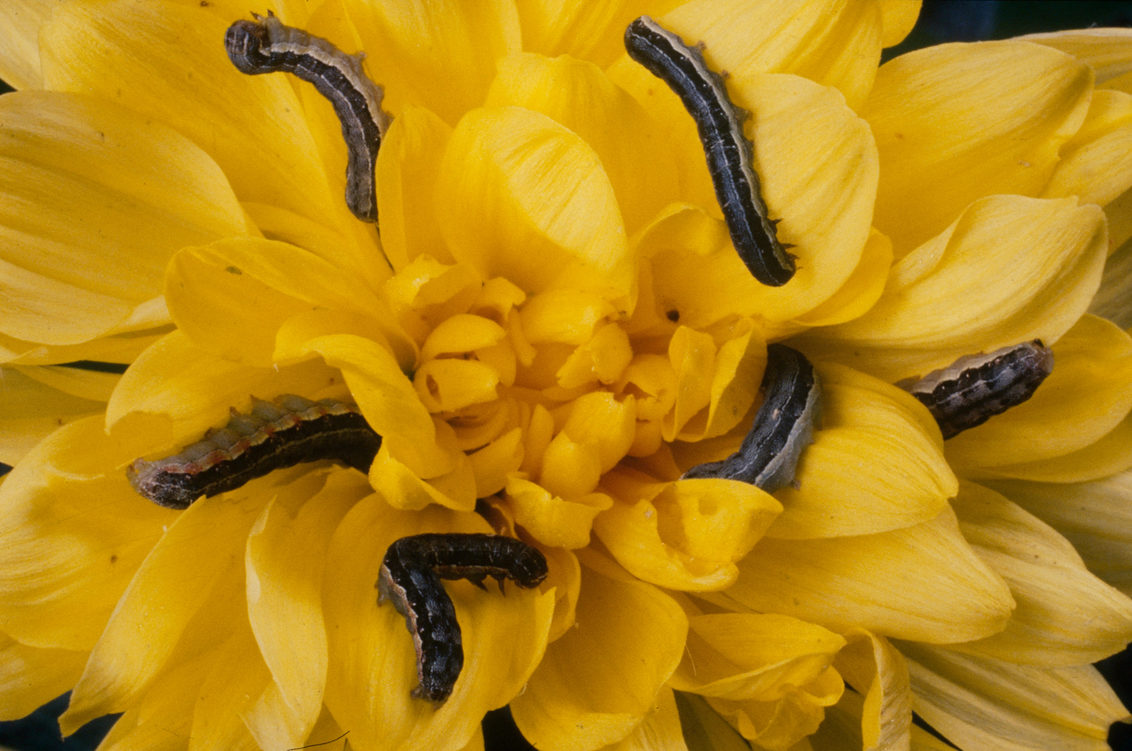Finally biting off more than they can chew

Anyone who has read The Hungry Caterpillar will remember the insect’s rampage of culinary discovery comes to an end on the seventh day, when he eats a leaf to cure his self-inflicted stomach ache.
By this point of the story, he seems to have learnt his lesson and practices restraint. However, readers of this blog working in the ornamental sector will recognise that the likelihood of a caterpillar stopping at just one leaf is slim to none.
Eric Carle doesn’t specify what breed of caterpillar his popular book is about but, judging from his green appearance, let’s assume he is a beet army worm. Such chewing pests pose a significant problem for the ornamentals sector as they’re capable of inflicting a huge amount of damage to crops. In comparison to their sucking partners in crime, which prefer to pierce leaves in order to suck out plant fluids, chewing pests bite and chew leaves, stems, buds, flowers and roots. Tell-tale holes in leaves are a trademark, as is discolouration on the foliage or petals, severed stems and leaves or wilting.
Chewing pests are difficult to control; resistance to chemicals is an issue and they’re capable of increasing their populations at an alarming speed.
Two of the worst offenders are the aforementioned beet army worm (Spodoptera exigua) and the golden twin-spot moth (Chrysodeixis chalcites).
The beet army worm is a small brown moth which lays packets of up to 250 eggs on the underside of leaves. The caterpillars are a yellowy green at the start of their life, but their colour and pattern is variable as they mature. They’re active mostly at night and fully grown caterpillars move to the ground when the time comes for pupation, which takes five to ten days in total.
The beet army worm is a major pest in greenhouses, feasting on chrysanthemum, gerbera, roses and potted plants. The smaller larvae target the parenchyma of leaves, only sparing the thin epidermis and veins and leaving a trail of silvery film in their wake. Larger larvae focus on the thicker areas, burrowing holes. They also attack buds, prevent new growth, stop flowers from opening and new leaves from sprouting.
The golden twin-spot moth is another of the most frequently found pest species in greenhouses, targeting ornamentals such as chrysanthemum and geranium.
The brown-gold moth has two droplet-shaped white marks on the forewing. The white/pale green eggs are laid singly or in pairs throughout a crop, on both the lower and upper surfaces of leaves. Caterpillars are green, with yellow stripes running along its body on either side.
When the time for pupation arrives, the cocoon can usually be found on the underside of leaves and sometimes in the soil.
Older caterpillars target the leaves, eating them until they appear skeletonised.
Both species have the capacity to damage plants in greenhouses to the point that they’re unmarketable.
Tackling these pests is difficult, but it’s about to get easier. Mainspring, a neonicotinoid alternative containing the novel active cyantraniliprole, will launch this autumn offering reliable, extended protection as part of a preventive pest management strategy.
Although thrips don’t strictly fall into the ‘chewing pests’ category, Mainspring will also prevent populations of this common greenhouse pests from building to damaging levels.
